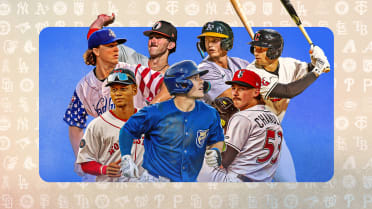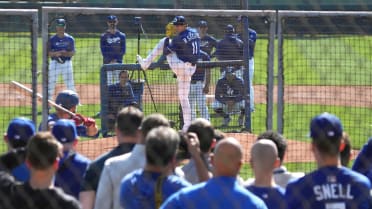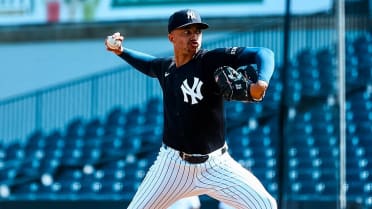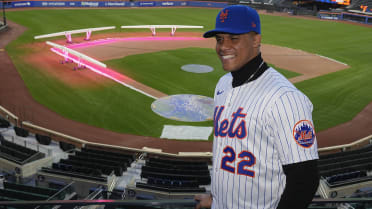Twins stay on brand with plethora of pitching to close 2024 Draft
The Twins’ specialty in the MLB Draft has been plucking overlooked college pitchers in the later rounds and turning them into effective Major League arms. And to wrap up the 2024 Draft on Tuesday, they followed that blueprint.
Minnesota began the process on Sunday by selecting shortstop Kaelen Culpepper at No. 21, but ended the three-day event by taking a college pitcher with 12 of its final 14 selections.
2024 Draft presented by Nike:
Draft Tracker | First-round signings | All-time biggest bonuses
Pick-by-pick analysis: Day 1 | Day 2 | Day 3
Bazzana goes No. 1 | Wake Forest makes history | Mariners nab switch-pitcher | Top 7 Day 1 storylines | Best hauls | Our favorite picks | Famous family ties | Biggest steals | These picks could be new club No. 1's | Picks who could be quickest to bigs | Sons of Manny, Big Papi selected | Complete coverage
Here are three takeaways from the Twins’ Draft haul:
Pitchers, pitchers and more pitchers
Taking a chance on developed college pitchers with a mix of pitches has worked wonders in recent years with Bailey Ober (12th round, 2017), Louis Varland (15th round, 2019), No. 4 prospect David Festa (13th round, 2021), No. 9 prospect CJ Culpepper (13th round, 2022), Spencer Bengard (15th round, 2023) or No. 19 prospect Zebby Matthews (eighth round, 2022), who was just promoted to Triple-A St. Paul, either becoming quick risers to the Major Leagues or dashing into the Twins’ Top 30 prospects list.
“I think the foundation of those pitchers we take that may turn into that -- the common theme is they have a full mix of pitches,” Twins vice president of amateur scouting Sean Johnson said. “They look like starters on the surface, or have had a track record of being a starting pitcher. That’s where we start, and lean towards the college pitcher who has struck out people and mitigated walks. That’s really the foundation of it.”
So, does Johnson think they grabbed that next under-the-radar pitcher?
“No promises,” Johnson said. “ … We feel great about all the arms we took. We see a lot of upside with these pitchers having a certain pitch quality that we liked, or just their resume. And if we can gain velocity on a fastball or breaking ball, whatever pitch it might be … we just lean on that and go from there.”
Eli Jones (seventh round), Jakob Hall (eighth round), Jason Doktorczyk (ninth round), Christian Becerra (12th round), Xavier Kolhosser (13th round) and Jacob Kisting (14th round) all fit that bill from the 2024 Draft class, but Michael Carpenter, the Twins’ 11th-round selection, has some of the best upside of the bunch.
Carpenter was the NJCAA Division II Pitcher of the Year after leading the D2 junior college ranks with a 1.03 ERA and 10.1 K/BB ratio. He had a 45-inning scoreless streak and has a deceptive fastball that can reach up to 93 mph, according to MLB Pipeline.
“Michael Carpenter does a lot of things we’re interested in,” Johnson said. “He’s obviously had an amazing year at Madison College and put up good numbers. He’s a strike thrower. He’s got a full mix. He looks like a starter. We think we can get more out of his body and his pitches, and that’s a guy that really resonates with our room -- a guy that we can potentially do more with once we get him into our organization.”
Bats with a power presence
Seven of the Twins’ first eight picks were position players, and they all had a common theme -- college hitters with power potential. That includes a pair of catchers, Khadim Diaw (the first player of Senegalese descent to be drafted) and Derek Bender (who raked in the Cape Cod League) that have positional versatility.
Four of Minnesota’s picks clobbered 20 or more homers at the NCAA Division I level this season (Billy Amick, Jaime Ferrer, Kyle DeBarge and Jay Thomason). Third baseman Peyton Carr (10th round) and outfielder Caden Kendle (fifth round) also have the ability to tap into more power, which was a point of emphasis for the Twins.
“I think you’re looking at players that hit the ball hard, hit it over the fence and are able to create damage,” Johnson said on Monday. “That’s kind of where this league is going at the big league level. You need guys that can do that. Anytime you see players like that, that have put up extra-base hits and home runs -- and looking at the exit velocities is another layer that we take a peek at to see if it lines up -- those are the kind of things we start with.
“The players we took today do a lot of that.”
Thomason does a lot of that -- in four seasons with Air Force, the 22-year-old clobbered 58 homers to go with a career .348 average and a 1.122 OPS. And one Twins connection: Reliever Griffin Jax, who was selected No. 93 overall in 2016, was the first U.S. Air Force Academy graduate to play in the Majors.
“[Thomason] put up big numbers this year,” Johnson said. “ … I think if he was eligible last year, which it didn’t sound like he was able to sign a year ago, [he] may have been drafted much higher. Totally thrilled to draft him on Day 3.”
College ranks
All but one of the Twins’ 22 picks were college players -- the lone exception being prep left-hander Dasan Hill out of Grapevine High School in Texas in Competitive Balance Round B. Minnesota usually scours the college ranks for pitchers, and this year was no different. And the reason is simple -- signability.
After the Draft concluded on Tuesday, Johnson said he expected the Twins to sign a majority of their selections.
“You’ll see teams take some of those famous names on Day 3 as kind of a backup plan if things don’t go well between here and the signing deadline [4 p.m. CT on July 30],” Johnson said. “The college guys are the ones you can actually reach agreements with at this point. I think that’s why you usually see us go that route.”
Jackson Stone is a reporter/producer for MLB.com.




